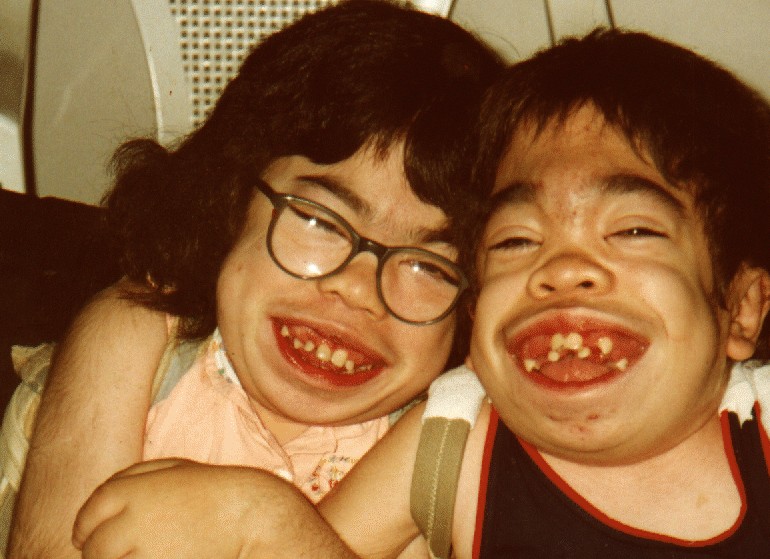Morquio Syndrome Types
There are two type of MPS IV:
Type A – does not have enough N-acetylgalactosamine-6-sulfate sulfatase, this is the more common form of Morqui’s syndrome
Type B – does not produce enough beta-galactosidase, fewer symptoms and milder
Morquio Syndrome Symptoms
Morqui’s syndrome is usually unnoticeable until the time the child starts to walk. The following are the characteristics of MPS IV:
- Waddling gait during ambulation
- Spinal deformity (sharp kyphosis at the lower back often mistaken as a gibbus deformity)
- Atlantoaxial instability (the ligaments holding the first two cervical vertebrae on the neck are very lax)
- Abnormally short neck
- Below average normal height for a specific age
- Short forearm and leg bones (ulna and fibula)
- Knocked knees or bowlegged knees
- Flared ribs
- Stubby fingers and toes
- Large head
- Widely spaced teeth
- Early degenerative joint disease
- Corneal clouding
- Cardiomegaly and mild hepatosplenomegaly
- Heart murmur
- Inguinal hernia
Morquio Syndrome Treatment
Since this is a hereditary disorder, genetic counseling is suggested for parents who have familial history of Morqui Syndrome. Enzyme replacement therapy is still under investigation for effectiveness. As of the present, there is still no specific treatment. Physical presentations are treated specifically. Osteotomies are done to correct the alignment of legs to improve gait. Spinal fusion is also considered to prevent progression of spinal deformities, spinal cord damage and death. Proper handling and positioning of the child must be taught to prevent contractures, improve breathing and prevent subluxations. Magnetic Resonance Imaging is advisable to check the stability of the neck. Support groups are helpful to better understand the course of the disease and attitudes toward a child or family with Morqui’s syndrome
http://www.Symptoms-Causes-treatment.blogspot.com detect diseases at an early stage symptoms, and find out the causes and treatments best suited.
Morquio Syndrome Facts
This is a rare genetic condition which affects both males and females equally. A family history of Morqui Syndrome increases the probability of having one. There is one in every 200,000 births to have this condition. The child is normal at birth and skeletal deformities become evident when the child grows. Since the symptom is noticeable during the first year of life several laboratory and diagnostic tests are made. Urine test is the primary laboratory test used to determine the presence of mucopolysaccharides but cannot exclusively determine the exact type of MPS. Genetic test, x-ray of the spine and long bones and ECG and ultrasound can also help determine MPS IV.
Person with Morqui syndrome has normal or little mental impairment. One of the important concern is the atlantoaxial instability which will lead to spinal cord damage causing paralysis or sensory and motor impairment. Cardiorespiratory complications such as heart problems, murmurs and difficulty in breathing may hinder the child to perform activities independently.
Morquio Syndrome Life Expectancy
Most of the patients with Morqui Syndrome die from complications of spinal cord compression and cardiorespiratory failures. Individuals with Morqui Syndrome have a life expectancy of approximately 30 years. Some dies as early as age of 2 or 3 years old and some survive up to sixty years old. Early detection and intervention can prolong and enhance life.
Morquio Syndrome Pictures

